Artillery in Canada (5) Ontario: Wallaceburg, Wasaga Beach, Waterdown, Waterford, Waterloo, Watson's Corners, Welland, Whitby, Whitney, Wilberforce, Williamstown, Windsor, HMCS Hunter, and Wingham
Wallaceburg, Wasaga Beach, Waterdown, Waterford, Waterloo, Watson's Corners, Welland, Whitby, Whitney, Wilberforce, Williamstown, Windsor, HMCS Hunter, and Wingham
The aim of this website is to locate, identify and document every historical piece of artillery preserved in Canada. Many contributors have assisted in the hunt for these guns to provide and update the data found on these web pages. Photos are by the author unless otherwise credited. Any errors found here are by the author, and any additions, corrections or amendments to this list of Guns and Artillery in Canada would be most welcome and may be e-mailed to the author at [email protected].
For all official data concerning the Royal Regiment of Canadian Artillery, please click on the link to their website:
Royal Regiment of Canadian Artillery Website
According to the 1974 edition of ACP 125 Cansupp 1A, "Sheldrake" was the appointment title for the artillery representative in a headquarters. "GOLF" was the arms indicator to be used by artillery callsigns on nets other than their own, especially those of the supported arms.
Wallaceburgh
155-mm M109 Self-propelled Howitzer, (Serial No. 34808), 1968, AC: MD, ECC: 119204, HUI C: 1941, SAUI C: 1941, VMO No. DLE21343, VMO Date: 10 Jun 2005. Display Monument.
Wasaga Beach
SBML 6-pounder Carronade, weight (500 lbs), signal gun, No. 1 of 2, made for CPR’s steamships on the Great Lakes. Nancy Island.
SBML 6-pounder Carronade, weight (500 lbs), signal gun, No. 2 of 2, made for CPR’s steamships on the Great Lakes. Nancy Island.
Waterdown


(Stinger503 Photos)
German First World War 10.5-cm leichtes Feldhaubitze 16 (10.5-cm leFH 16), (Serial Nr. 13733).


(The Blue Quasar Photos)
40-mm Bofors Light Anti-Aircraft Gun, G Mk 3/7, OFE/C 1945, Reg No. L/23520. Royal Canadian Legion Branch No. 551.
Waterford


(JustSomePics Photos)
German First World War 25-cm schwerer Minenwerfer alt Art 25-cm sMW), (Serial Nr. 1930), TBC, captured by 9th Field Company, Canadian Engineers at Vimy Ridge, 9 April 1917. This mortar stands beside a monument in front of High School.
The 25 cm schwerer Minenwerfer (German for "mine launcher"), often abbreviated as 25 cm sMW, was a heavy trench mortar developed for the Imperial German Army in the first decade of the 20th century. It was developed for use by engineer troops for destroying bunkers and fortifications otherwise immune to normal artillery. The 25 cm schwerer Minenwerfer was a muzzle-loading, rifled mortar that had a hydro-spring type recoil system. It fired either a 97 kg (210 lb) shell or a 50 kg (110 lb) shell, both contained far more explosive filler than ordinary artillery shells of the same caliber. The low muzzle velocity allowed for thinner shell walls, hence more space for filler for the same weight shell. The low velocity also allowed the use of explosives like ammonium nitrate–carbon that were less shock-resistant than TNT, which was in short supply at the time. Shells filled with TNT caused a large number of premature detonations, making the Minenwerfer riskier for the gun crew than normal artillery pieces. In service, the wheels were removed and the sMW was then placed in a pit or trench at least 1.5 meters (4 ft 11 in) deep, protecting the mortar and its crew. Despite the extremely short range, the sMW proved to be very effective as its massive shells were almost as effective in penetrating fortifications as the largest siege guns in the German inventory, including the 42 centimeters (17 in) Dicke Bertha (Big Bertha), a howitzer that was more than 50 times the weight of the sMW. The effectiveness of the sMW is indicated by the number in service, which increased from 44 when the war broke out, to 1,234 at its end. In 1916, a new longer barrelled version was put into production. This new model, which had a longer range, was designated the 25 cm schwerer Minenwerfer neuer Art (German for "new pattern"), which was abbreviated as 25 cm sMW n/A. The older, short-barrel model was then designated as the 25 cm sMW a/A (alter Art)(German for "old pattern").
Waterloo
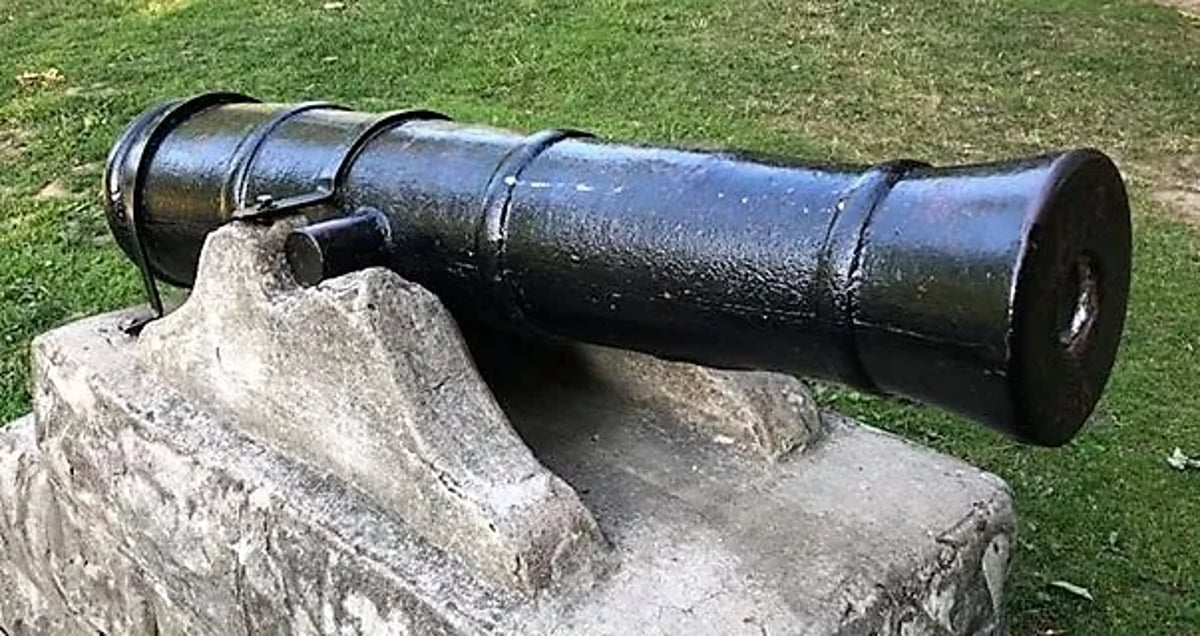
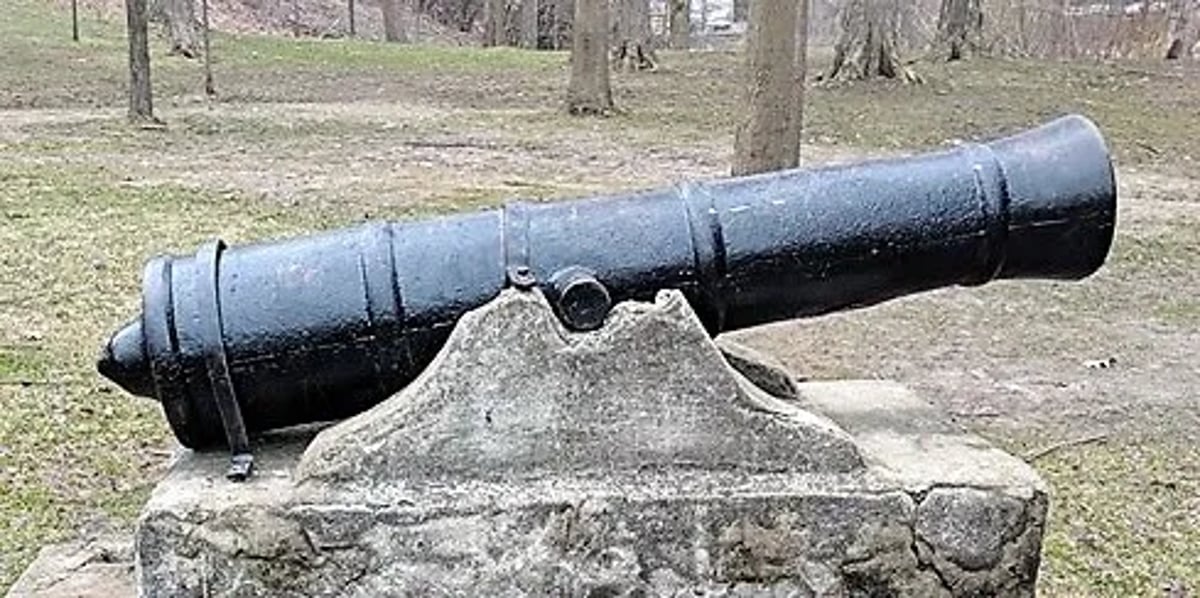
(Stinger503 Photos)
Cast Iron 3-pounder SBML Gun, mounted on a concrete stand, near the Gazebo in Waterloo Park. The cannon was cast in Waterloo at the Bricker and Booth Foundry. For years it was fired for events such as Victoria Day. However several accidents including a death led to the end of these celebrations. The cannon was eventually moved to Waterloo Park around 1903.
Reproduction SBML 6-pounder Gun, weight 20-0-20 (2,260 lbs), 1846, King George III cypher, mounted on a concrete carriage. Overlooking the cricket pitch, Waterloo Park.
5.5-inch BL Mk. III Gun on a Mk. I Carriage, Royal Canadian Legion Branch No. 530.
Watson's Corners
RML 9-pounder 6-cwt Gun, replica mounted on wood and iron wheels. This gun is a firing reproduction made by Tony Walsh for Parks Canada for display in the the Halifax Citadel.
Replica SBML Parrot Rifled Gun, also made by Tony Walsh
Welland
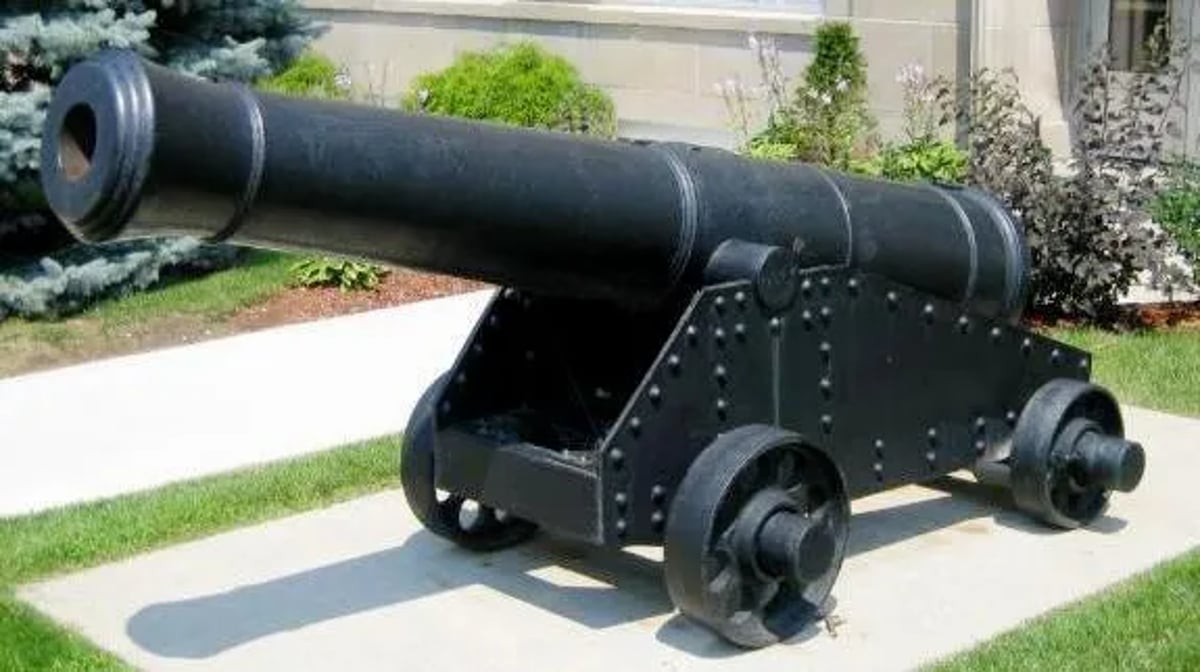
(The Blue Quasar Photo)
Blomefield Cast Iron 32-pounder 56-cwt Smoothbore Muzzleloading Gun, weight unknown, (WCo) (Walker & Company) on left trunnion, (Serial No. 110) on right trunnion, King George III cypher, broad arrow mark, mounted on an unusual solid-sided iron carriage. On display at the Welland City Hall and Courthouse near the centre of the city.
Whitby
.webp)
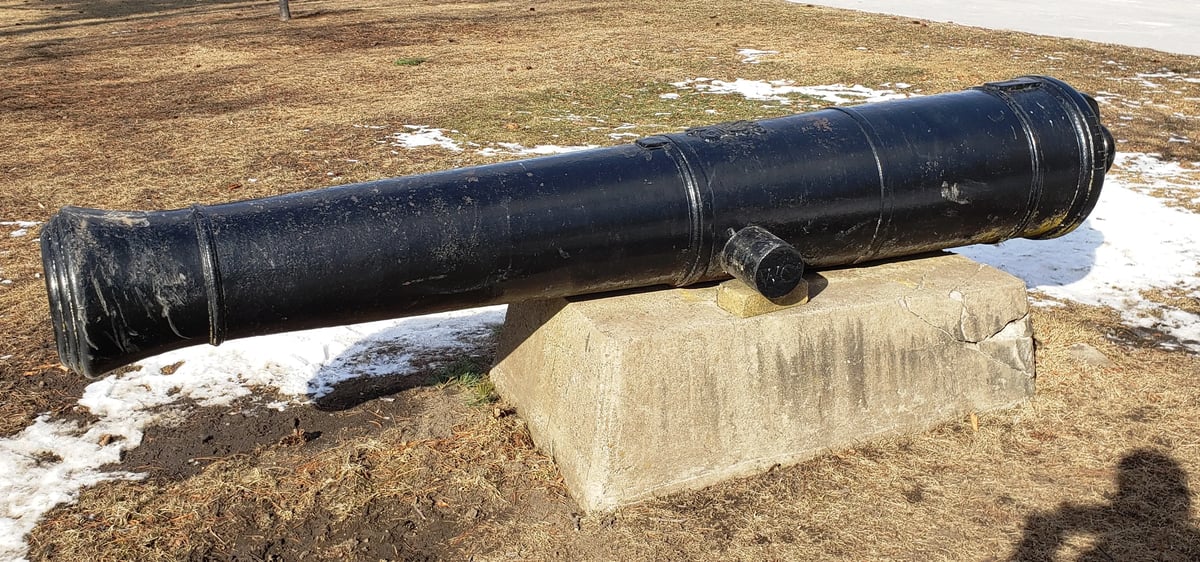
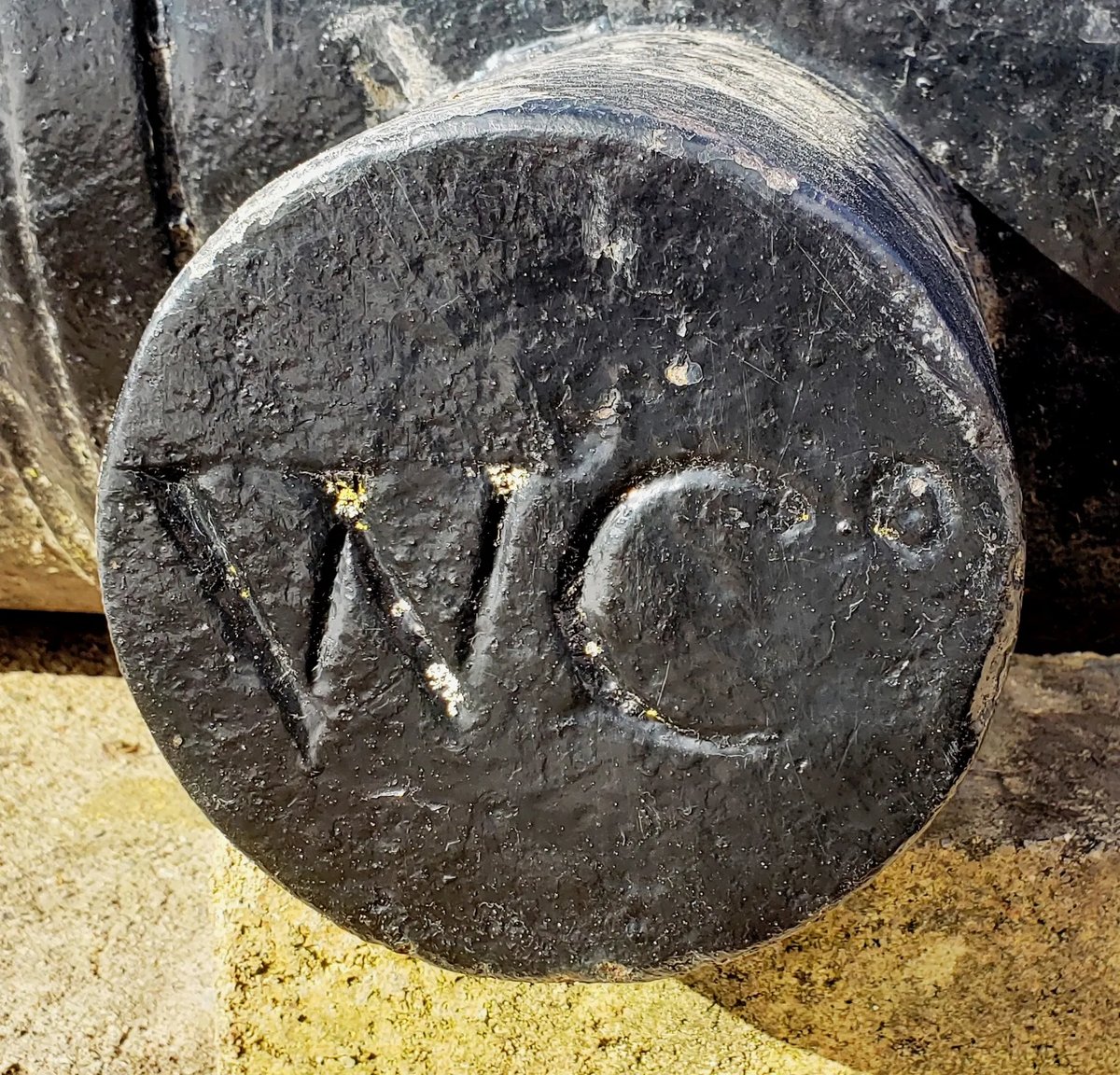
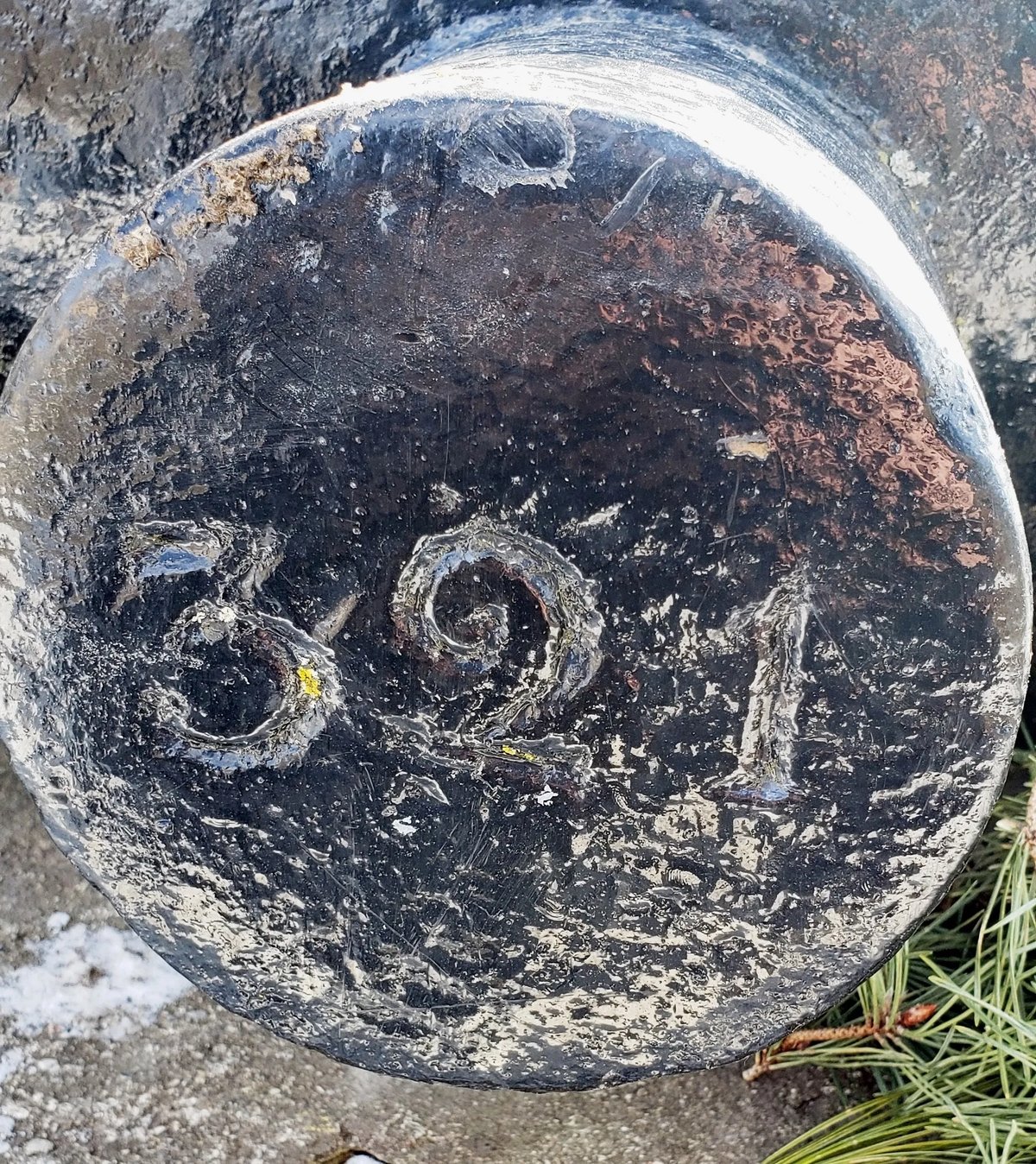


(Frank Hackenberg Photos)
Blomefield Cast Iron 32-pounder 56-cwt Smoothbore Muzzleloading Gun, weight 50-0-0 (5,600 lbs), (WCo) (Walker & Company) on left trunnion, (Serial No. 321) on right trunnion, King George III cypher, broad arrow mark, mounted on a concrete base, No. 1 of 2, Trafalgar Castle school.
.webp)
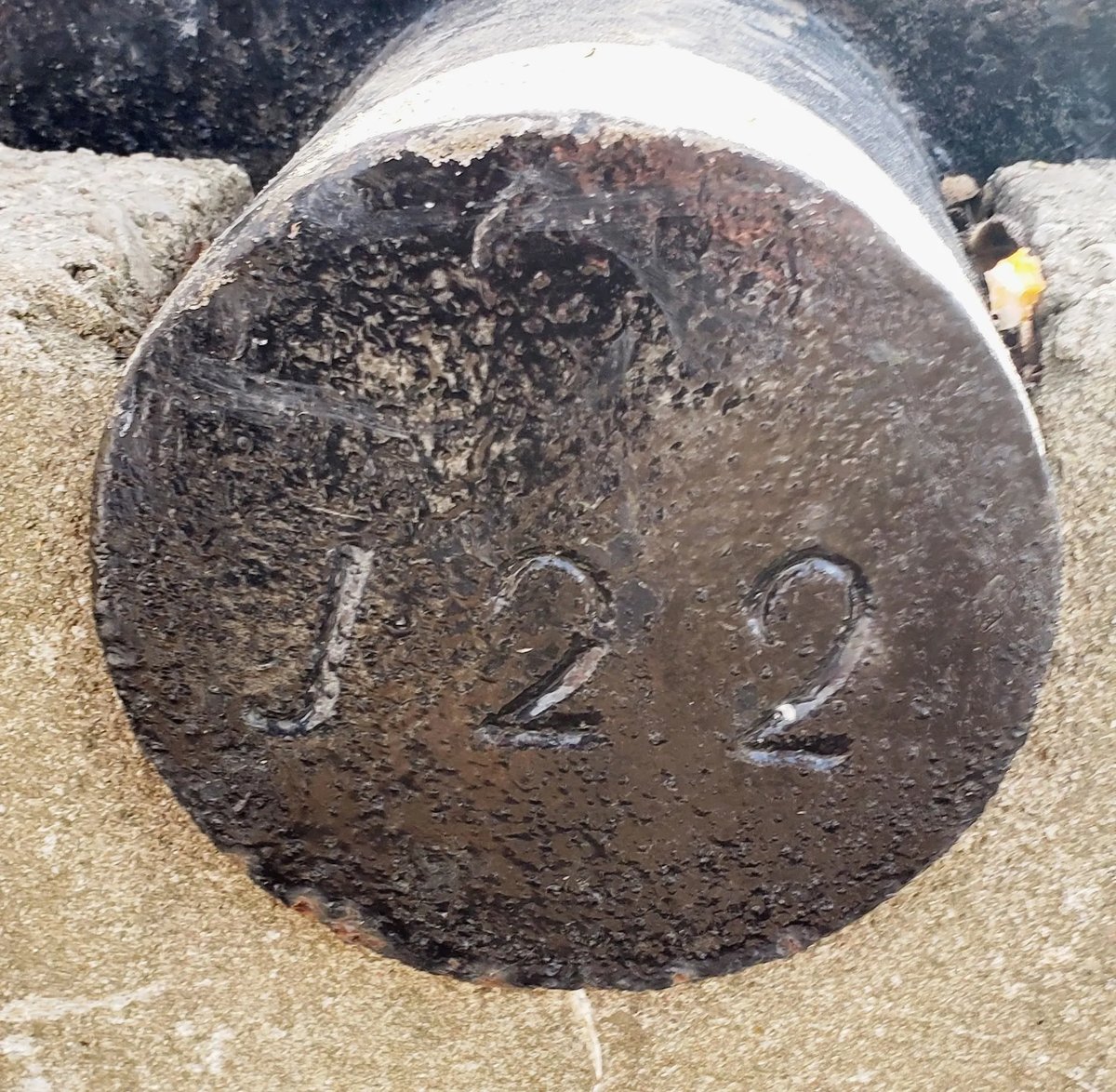

(Frank Hackenberger Photos)
Blomefield Cast Iron 32-pounder 56-cwt Smoothbore Muzzleloading Gun, weight 50-1-23 (5,651 lbs), (WCo) (Walker & Company) on left trunnion, (Serial No. 112) on right trunnion, King George III cypher, broad arrow mark, mounted on a concrete base, No. 2 of 2, Trafalgar Castle school.
Whitney
155-mm C1 (M1A2) Medium Howitzer on M1A2 Carriage, aka M114, manufactured at Sorel Industries Limited in Quebec, Queen Elizabeth II cypher. CFR 34444. The carriage plate reads: CARR. HOW. 155MM M1A2 CDN. SOREL INDUSTRIES LTD. CANADA (1955), REG. NO. CDN 29, INSP (symbol). Highway 60 before Algonquin Park.
Wilberforce

(Terry Honour Photo)
Dual .50-calibre Anti-Aircraft machine guns. Cradle & Shield Mark 14, Serial 27472. Royal Canadian Legion.
Williamstown


(JSDAFM Photos)
9-pounder 8-cwt Muzzleloading Rifle, weight >900 lbs, Reg. No. unknown, this type of gun was used in the NW Rebellion, 1885. Sir John Johnson House.
Windsor
Blomefield Cast Iron 24-pounder 50-cwt Smoothbore Muzzleloading Gun, (Serial No. 27071, CARRON 1840), on left trunnion, (24P) on right trunnion, ring dent on barrel, mounted on a concrete stand in Assumption Park, on the riverfront.
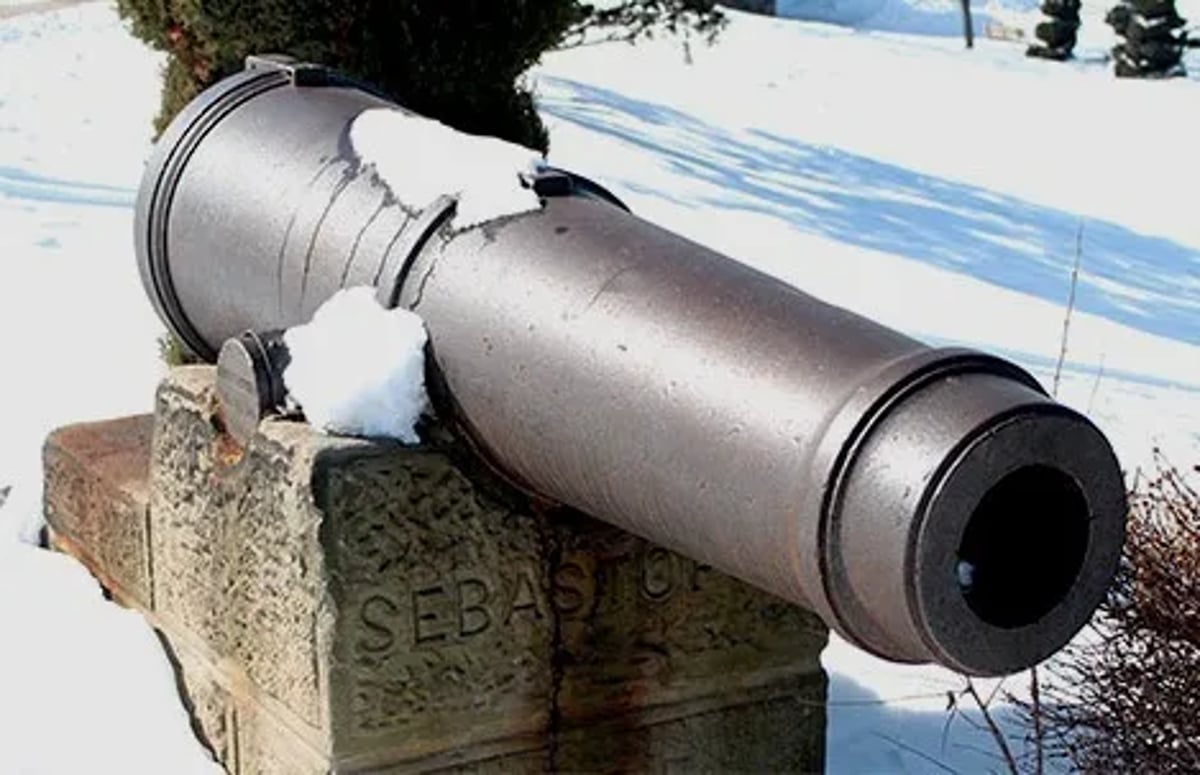

(City of Windsor Photos)
Russian Cast Iron 24-pounder 50-cwt Smoothbore Muzzleloading Gun, forged by Armstrong at Alexandrovski, with double-headed Eagle, Crimean War trophy with trunnions intact, mounted on a concrete stand in Assumption Park, on the riverfront.
German First World War 7.7-cm Feldkanone 96 neuer Art (7.7-cm FK 96 n.A.), possibly (Serial Nr. 4451), captured by the 1st Battalion on 27 September 1918, East of Sainz-lez-Marquion. Currently being restored at St Clair College.




(Kevin Hodson Photos)
German First World War 15-cm schwere Feldhaubitze 13 (15-cm sFH 13), (Serial Nr. 125), TBC, salvaged by the 2nd Division Southeast of Bois de Bouche, near Cagnicourt by No. 2 Section, 1 CDAC. It is now on display with the Essex and Kent Scottish Regiment at Sandwich Street.
Windsor
Battle of Windsor 4 Dec 1838 plaque.
Windsor, HMCS Hunter
HMCS Hunter is located at 960 Ouellette Ave.

(DND Photo)
4-inch/45 QF Mk. XVI* Twin Guns (Serial No. S/unknown), L, left, and (Serial No. S/unknown), R, right, on a Mk. XIX High Angle mounting, located in the basement of HMCS Hunter, ca. 1968 were disposed of ca 1974-75. The photo is of Admiral Hose being given a tour of Hunter’s Gun Battery. The functional 4-inch Breach Blocks were substituted for the welded ones on HMCS Haida enabling the A Gun mount to be able to fire blank rounds again so in a way they were partially preserved before the main guns were scrapped. The torpedo cutaway trainer that was on the quarterdeck as a centre piece was also transferred to HMCS Haida and was on display for years in the bell room.
In the early 1950s the Director of Naval Reserves implemented a plan to have each Naval Division specialize in one aspect of shipboard training, the objective being that the Naval Reservist should be equal to his RCN counterpart in knowledge and proficiency. Despite the fact that Windsor was, and still is, an engineering town and that HUNTER had one of the largest engineering complements in the RCN(R), it was decided that those Divisions closest to the coasts would specialize in engineering. HUNTER was therefore made a Gunnery Division.
The open basement area was converted into training areas. After months of difficult negotiations, Commander Wilkinson was able to get a motor generator set installed in the building which would provide 220 volt direct current to feed shipboard equipment. This allowed the setting up of a gun battery, with the installation of some full-scale gunnery equipment which had been acquired from War Assets, twin 4-inch guns as well as Boffins, Bofors and Oerlikon anti-aircraft guns along the south side of the basement. Windsor Star, 10 Dec 1968.
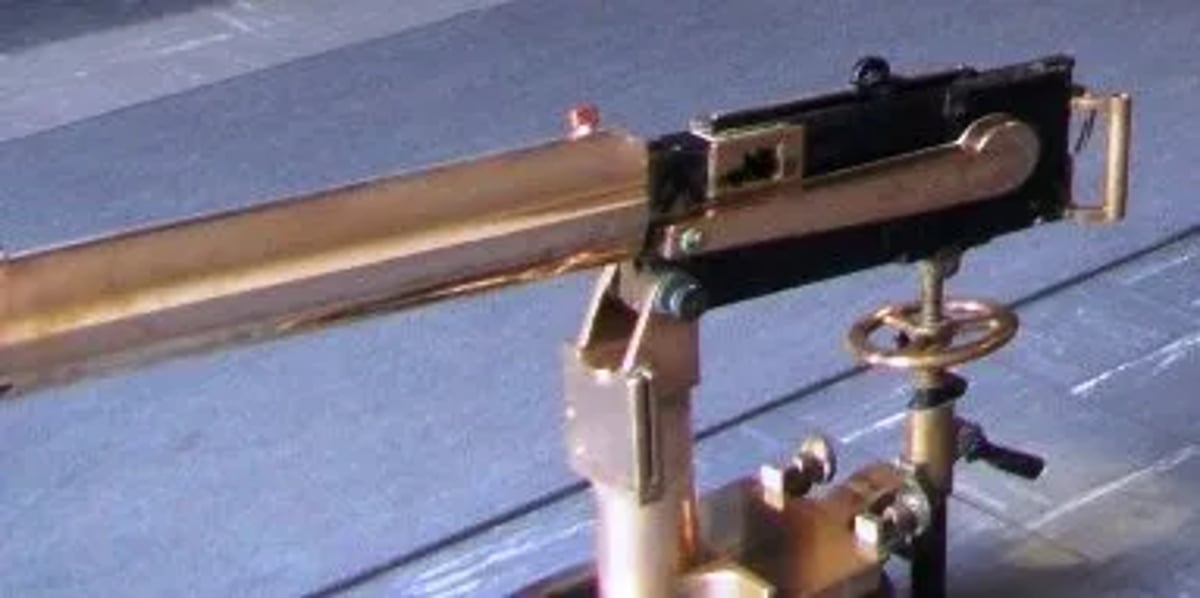
(Anthony R. Beresford Photo)
Vickers .303-inch Machine Gun, mounted inside the entrance to HMCS Hunter.
Wingham
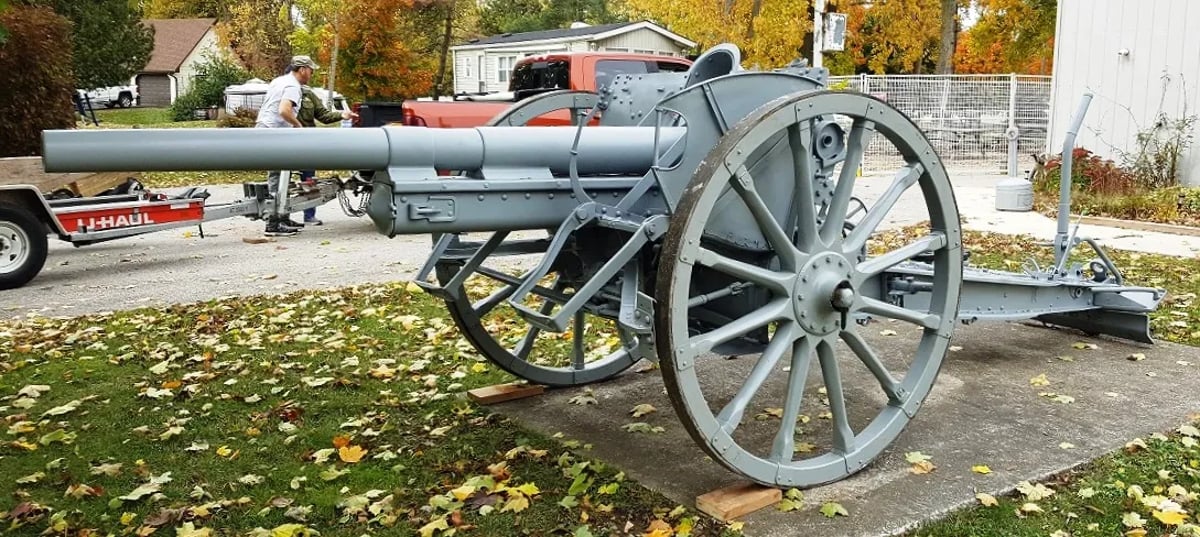
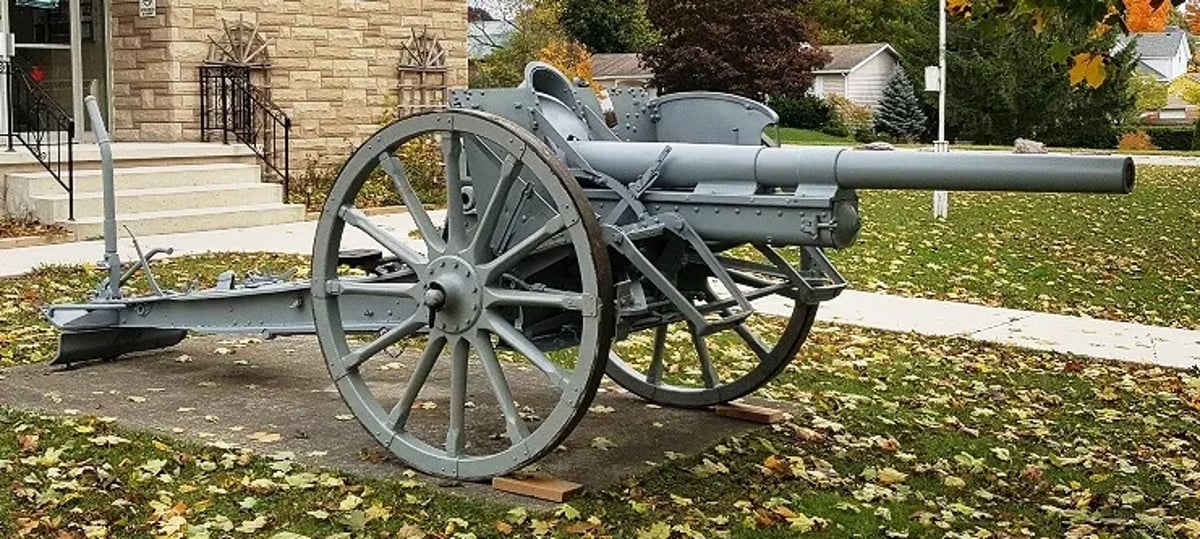
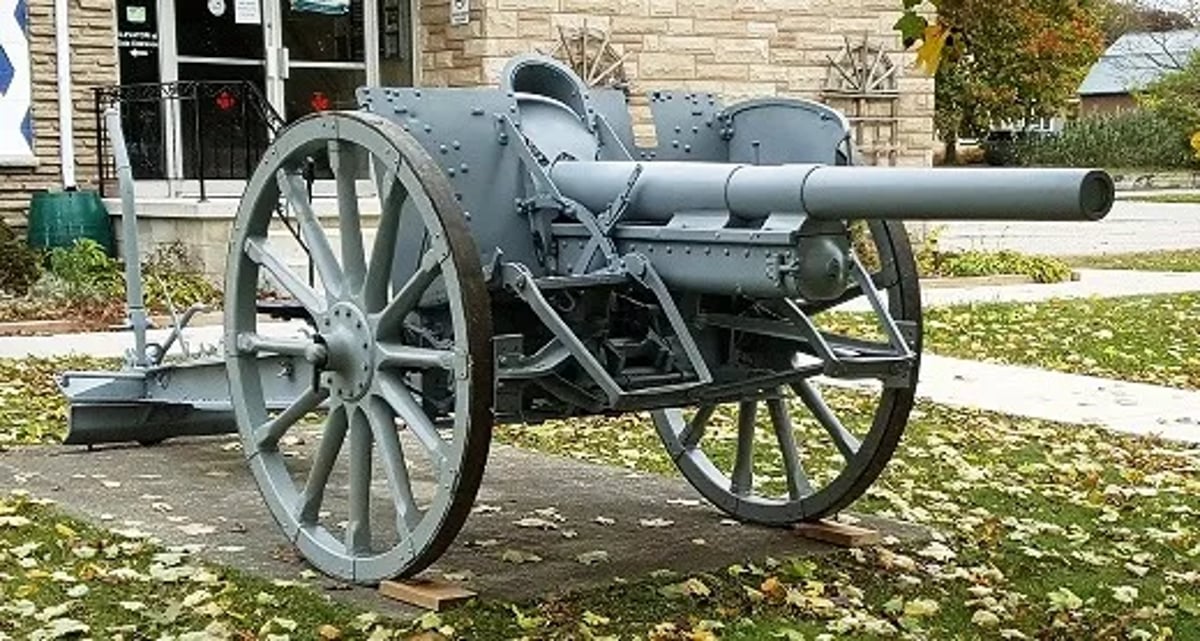

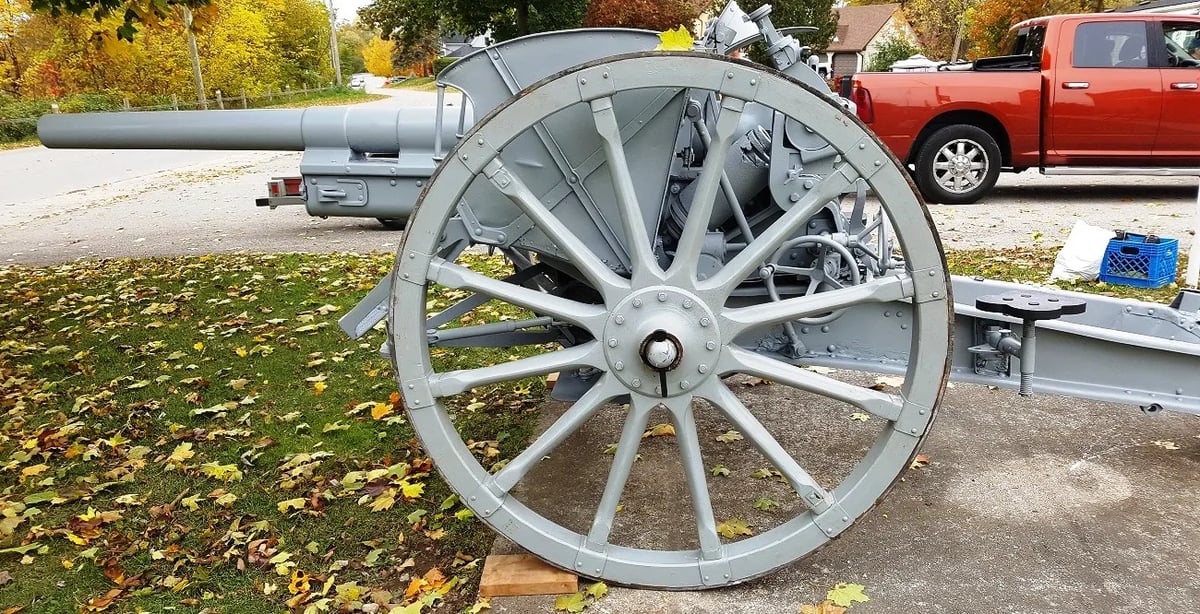
(Terry Honour Photos)

(Jack Moloughney Photo)
German First World War 7.7-cm Feldkanone 16 (7.7-cm FK 16), (Serial Nr. 12602), 1917, in front of the Royal Canadian Legion Branch No. 180, at 183 Victoria Street W. This gun was captured by the 10th Canadian Infantry Battalion, Canadian Expeditionary Force, during the Battle of Drocourt-Queant on 2 August 1918. It was given to the town of Wingham as part of the post-First World War trophy redistribution program.
12602 was refurbished in Oct 2020 by the Matross crew, spearheaded by WO (Retiredd) Jack Moloughney, with the assistance of Mr Tony Walsh, and personnel from 2 Svc Bn and 2 RCHA. The gun was returned to Wingham on Wed 14 Oct 2020 by Jack Moloughney, Paul Deryaw and Terry Honour.
Blomefield Cast Iron 32-pounder 56-cwt Smoothbore Muzzleloading Gun, weight TBC, maker and Serial No. TBC, mounted on a concrete stand in front of the Wingham District Museum (former Post Office) at 273 Josephine Street.





